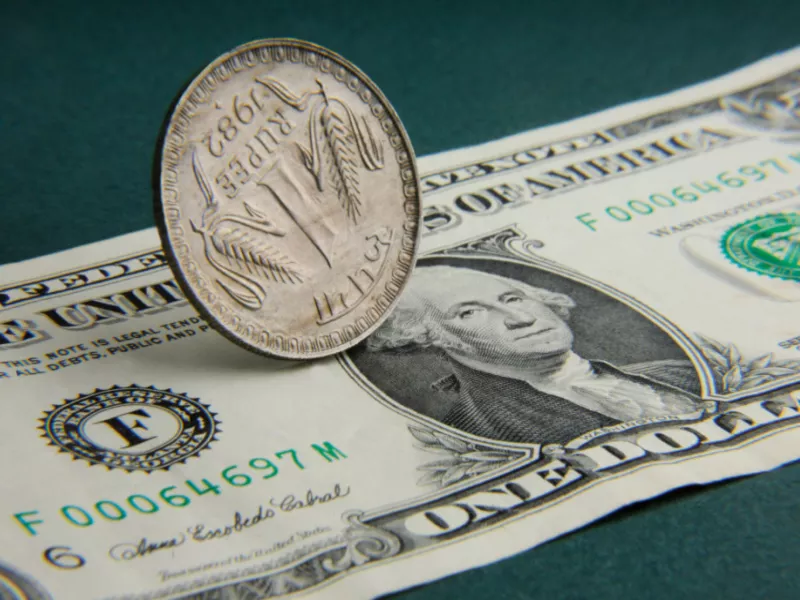Indian Rupee Hits Record Low Against U.S. Dollar Amid U.S. Tariff Pressure

Weakness in the rupee reflects investor concerns, foreign outflows, and trade uncertainties as India faces punitive U.S. tariffs
Bhubaneswar : The Indian rupee fell to an all-time low against the U.S. dollar, continuing its downward trajectory amid mounting pressures from U.S. tariffs and global market uncertainties. The currency closed 0.39% lower at 88.4425, down from Wednesday’s close of 88.1000. Last Friday, the rupee had previously touched a record low of 88.36, highlighting the ongoing strain on Asia’s third-largest economy.
The slide in the rupee is being driven primarily by punitive U.S. tariffs on Indian goods that came into effect last month. These tariffs have dented investor confidence and made the rupee one of the most vulnerable currencies in Asia. Foreign investors have already withdrawn a net \$11.7 billion from Indian debt and equity markets so far in 2025, exacerbating pressure on the currency.
The steep levies imposed by the U.S. have affected India’s trade and growth outlook, creating uncertainty for exporters and importers alike. Indian exporters are facing disruptions in order flows, while importers are increasingly hedging their foreign exchange exposure, distorting the demand-supply dynamics in the forex market. Dilip Parmar, a foreign exchange research analyst at HDFC Securities, noted, “While importer dollar demand is persistent, exporter flows, and foreign portfolio flows seem to be muted, which is leading to pressure on the rupee.” He added that the USD/INR pair may continue consolidating for a few days before potentially moving higher.
In response to the rupee’s decline, the Reserve Bank of India (RBI) has actively intervened in the market, selling dollars to temper rapid swings. Bankers emphasize that these interventions are not aimed at defending a specific rupee level but are intended to maintain stability and prevent panic among companies and investors.
The rupee’s weakness contrasts with the performance of many regional peers, which have been buoyed by expectations of an upcoming U.S. Federal Reserve rate cut. Abhishek Goenka, founder and CEO of IFA Global, observed that the rupee’s vulnerability is likely to persist in the near term, particularly due to the impact of U.S. tariffs on India’s labor-intensive sectors.
Meanwhile, most Asian currencies fell on Thursday as the dollar index inched higher, with investors awaiting U.S. inflation data later in the day. Analysts expect that unless there is a resolution on trade negotiations between India and the U.S., the rupee could remain under pressure, potentially testing new record lows in the coming weeks.
The Indian government, meanwhile, has announced targeted measures such as consumption tax cuts to mitigate the impact of U.S. tariffs and support domestic exporters. Both nations are reportedly exploring the resumption of trade negotiations to address tariff-related challenges, although uncertainties persist.
As the rupee faces continued headwinds, market participants are closely watching RBI interventions, foreign capital flows, and trade developments to gauge the currency’s trajectory in the coming months.









